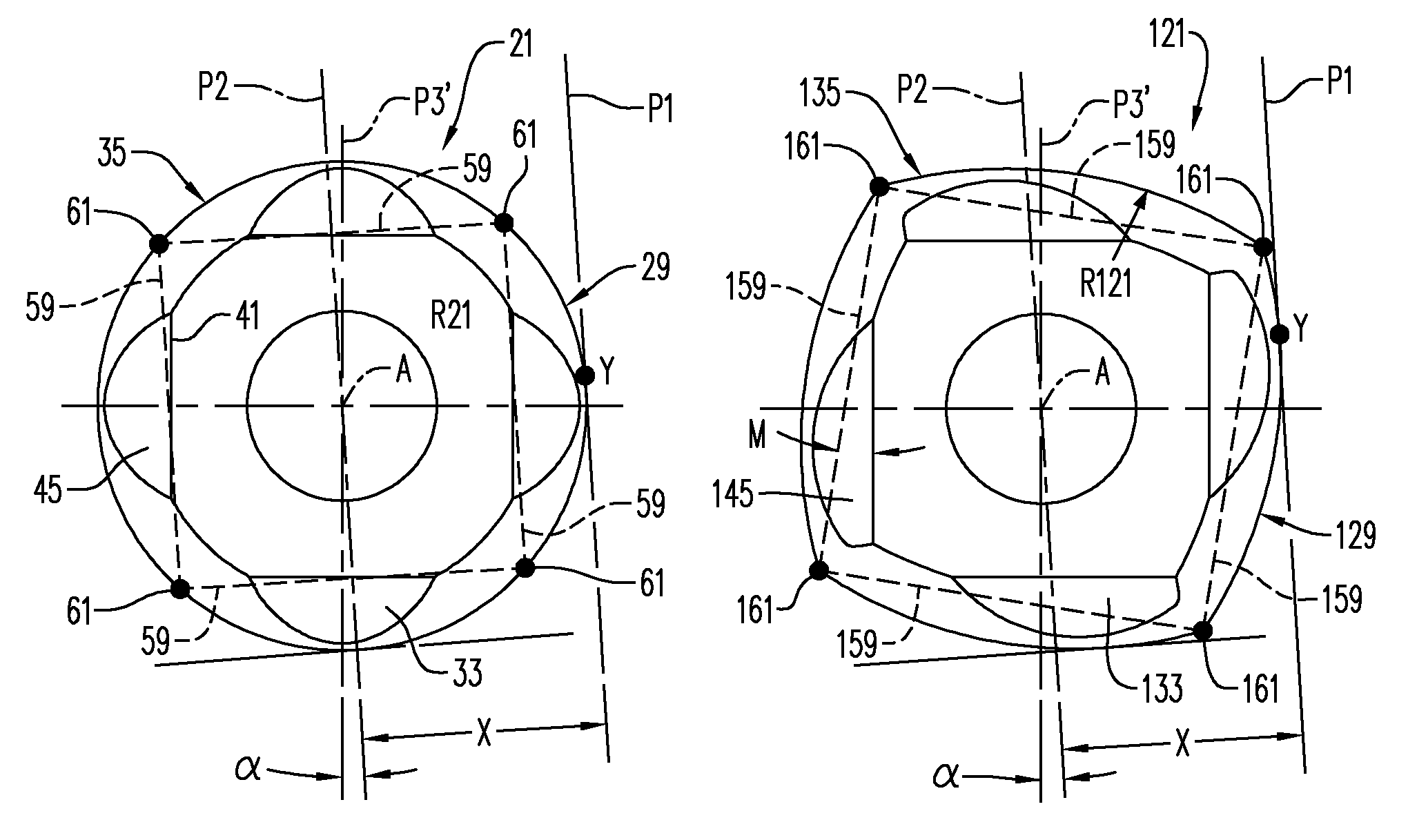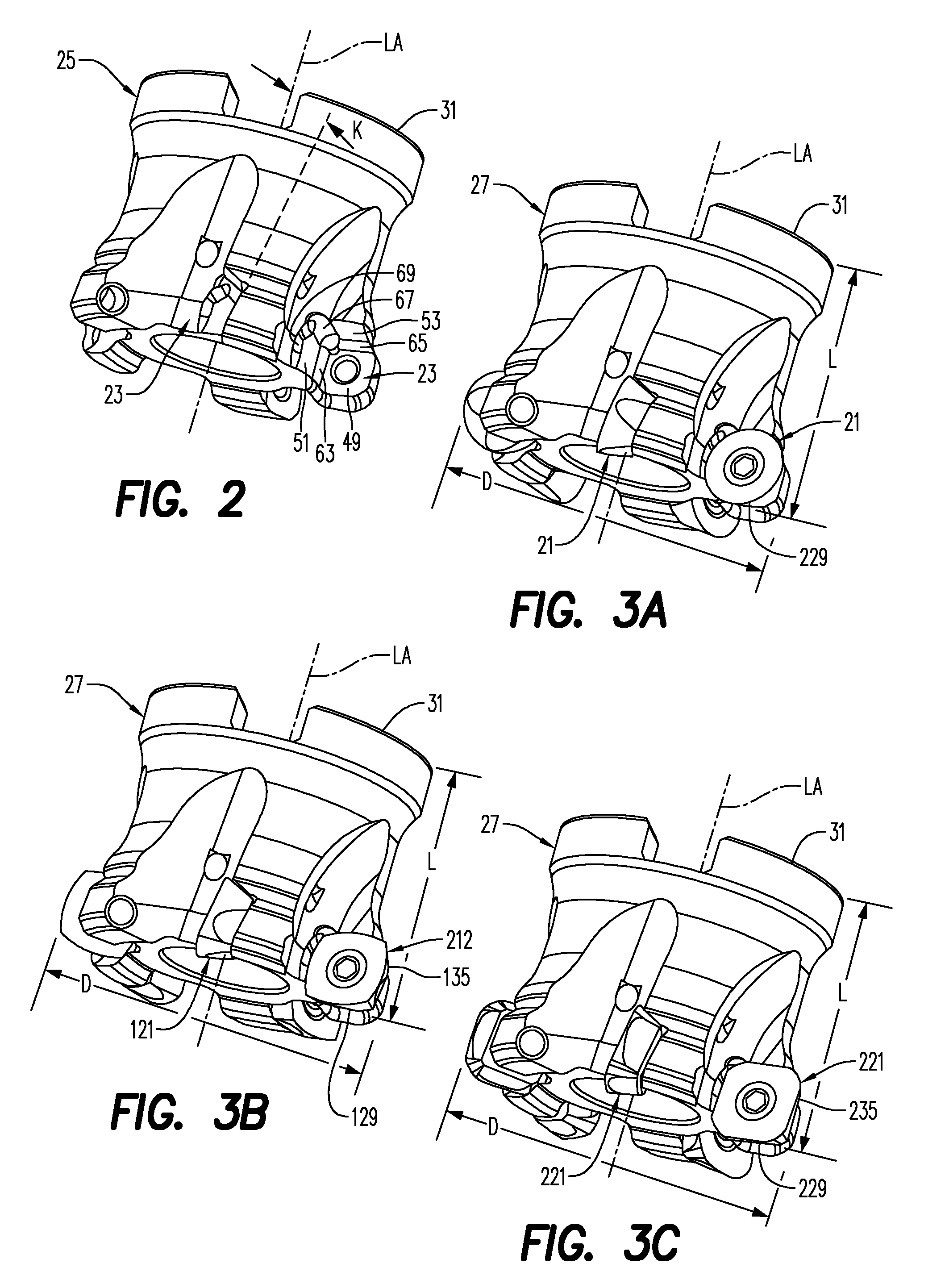Family of cutting inserts, milling cutting tool, and cutting insert
a cutting tool and insert technology, applied in the field of cutting inserts, can solve problems such as creating chatter effects, and achieve the effects of avoiding high feed per tooth, high radial cutting force, and high leading angl
- Summary
- Abstract
- Description
- Claims
- Application Information
AI Technical Summary
Benefits of technology
Problems solved by technology
Method used
Image
Examples
Embodiment Construction
[0021]Different inserts 21, 121, 221 of a family of cutting inserts are shown in FIGS. 1A-1C. Each insert 21, 121, 221 has a different geometry, such as, but not necessarily, having cutting edges that are of different shapes when viewed in plan. For illustrative purposes, the insert 21 has a circular shape when viewed in plan, the insert 121 has a four-sided shape when viewed in plan with cutting edges having radii equal to a diameter of a circle inscribed in the corresponding circular insert 21 and with radiused corners between the cutting edges, and the insert 221 has a four-sided shape when viewed in plan with cutting edges having radii greater than the diameter of a circle inscribed in the insert and with a plurality of (three) chamfers between the cutting edges. The differences in geometry can involve other features of the insert, instead of or in addition to the cutting edges, such as the presence or absence of chipbreakers, flat or curved wiper surfaces, etc.
[0022]Each insert...
PUM
| Property | Measurement | Unit |
|---|---|---|
| angle | aaaaa | aaaaa |
| angle | aaaaa | aaaaa |
| axial angle | aaaaa | aaaaa |
Abstract
Description
Claims
Application Information
 Login to View More
Login to View More - R&D
- Intellectual Property
- Life Sciences
- Materials
- Tech Scout
- Unparalleled Data Quality
- Higher Quality Content
- 60% Fewer Hallucinations
Browse by: Latest US Patents, China's latest patents, Technical Efficacy Thesaurus, Application Domain, Technology Topic, Popular Technical Reports.
© 2025 PatSnap. All rights reserved.Legal|Privacy policy|Modern Slavery Act Transparency Statement|Sitemap|About US| Contact US: help@patsnap.com



